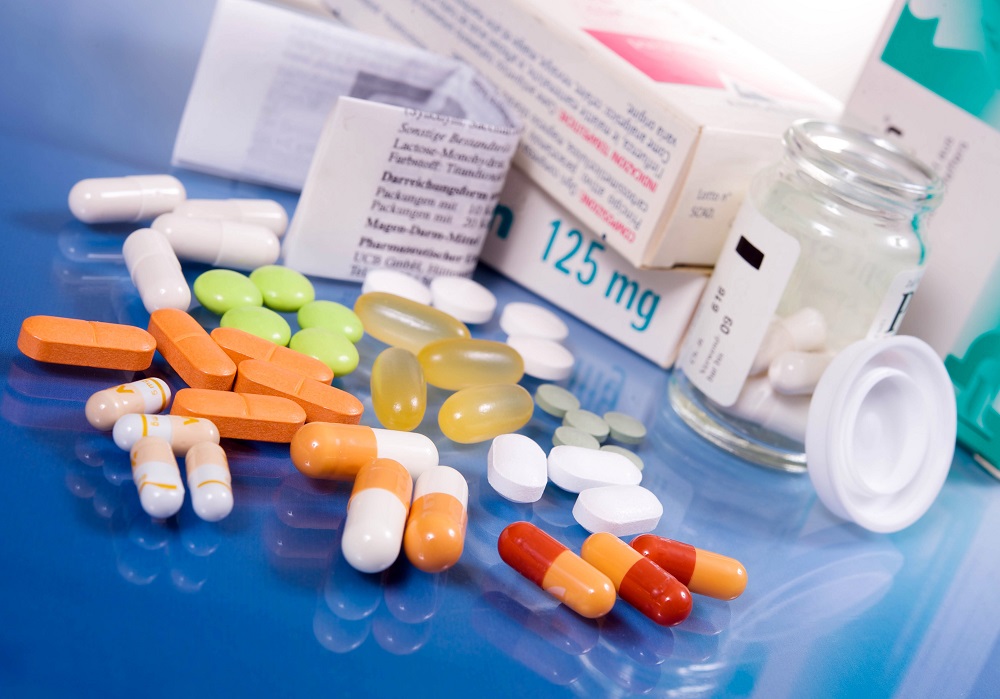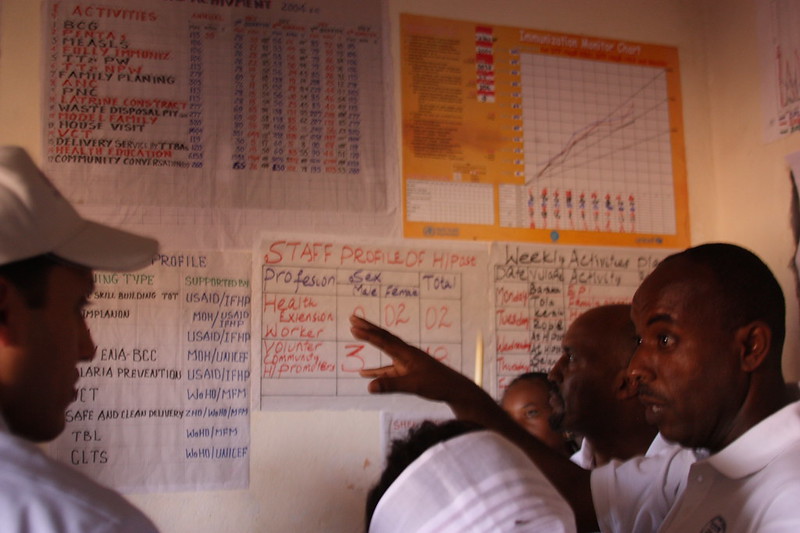Recommended
Criticising cancer medicine pricing as too high is what football fans know as an "open goal"—a target that is hard to miss. Yet somehow the World Health Organization (WHO) Technical Report on Cancer Pricing manages to do just that with a paper to the WHO Executive Board calling for price and cost transparency.
The assumption goes that transparency will reduce the prices and costs of cancer medicines, a mantra that has united the Trump administration, the US Congress, and the Italian health minister with many NGOs who have called for “greater cost and price transparency”—a sentiment echoed by KEI, which states that “international action is required to improve transparency in reporting the costs of R&D and production, including public sources of funding.”
Price transparency will probably reduce access to new cancer drugs
OHE and CGD recently published a paper and a blog which sets out why price transparency for on-patent drugs is likely to reduce access to drugs. The argument for transparency made in the WHO report is that one payer can insist on getting the same (assumed low) price as another payer. However, price transparency links markets and leads to uniform prices. This means payers in low-income countries will end up with the same prices as those in high-income markets. This will slow the diffusion of innovative products to middle- and low-income countries, thereby reducing access for the neediest.
For example, in a recent piece, Kremer and Snyder find that impeding price discrimination across countries by imposing price controls or capping price at a percentage of the US price (policies roughly equivalent to linking markets through price transparency) increases deadweight loss for drugs and vaccines by over 50 percent. They also find that a monopolist manufacturer of a vaccine or drug “does just about as well if it has to rely on the United States as its sole revenue source as it would if it served the whole world at a uniform price.”
The WHO report supports at places the use of differential pricing in order to improve access. But this is not compatible with its most highlighted demand for transparency. Without confidentiality, differential pricing can only be implemented by a global pact on tiered pricing by region and market, which prevents international reference pricing (defeating the purpose of WHO’s proposal) or some sort of global monopsony purchaser, both of which would have to include the United States. The WHO report explicitly proposes neither of these. So, the critical “how” question remains unanswered.
The WHO report argues that “there is limited context-specific evidence that improving price transparency has led to better price and expenditure outcomes. Nonetheless, improving price transparency should be encouraged on the grounds of good governance.” But when the objective is access to new products, governance is not a legitimate end in and of itself—particularly if it comes with less access for the poorest markets. The latter is fairly likely at a time when the world’s largest market, the United States, is threatening to reference price other countries’ prices.
As discussed in our recent report, where transparency of both price and process becomes important is in procurement and reimbursement of multi-source (off-patent) products, which make up over 90 percent of the drug market by volume and value in middle- and low-income countries, including treatments for cancer. More process transparency means more suppliers enter the market, and better understanding of procurement prices and downstream prices to patients strengthens the hand of buyers negotiating price-volume deals (assuming all generics on the market are of good quality and measures to protect against collusion are taken). WHO is well placed to seek to improve such procurement processes and facilitate one-way access to prices for commoditised goods. It is already doing good work for improving the workings of the markets for vaccines and other healthcare commodities through better sharing of information (see here and here), and more technical support to procurement departments in low- and middle-income countries (LMICs) is needed for this information to be used effectively to improve access.
Cost transparency will neither reduce prices nor increase access to new medicines
DiMasi et al. estimate the cost of a new drug (including cost of failures and the cost of capital) as $2.6 billion. This estimate is controversial in part because the data were not revealed. A more important issue is whether estimates of large company R&D adequately capture the heterogeneity of R&D activity. The study used by the WHO team, Prasad and Mailankody (2017), shows a range of $204 million to $2.6 billion using data from 10 biotech companies on 10 oncology drugs (each company has only one drug). Data and calculations are not disclosed. New work is in progress by DiMasi and Grabowski (presented at the recent American Association for Cancer Research) on R&D costs for oncology drugs. No doubt the numbers generated will again produce controversy. Furthermore, public expenditure on cancer drug development is substantial, also an unknown part of the R&D cost equation.
Individual product R&D costs are, however, not the key policy issue, unless payers around the world are seriously contemplating moving to a cost-plus pricing model, turning the industry into a regulated utility.
Insisting on cost transparency of R&D for individual products is problematic for two major reasons:
-
The first is about the practicalities of establishing real costs in a global marketplace. The need to include failure rates, and global cost base of multinationals as well as high levels of intangible capital, makes calculating cost per each product complex. Even if it were doable at a global level, how would R&D costs then be allocated across countries? The Office of Fair Trading’s study of the UK Pharmaceutical Price Regulation Scheme, which has for years included profit controls, demonstrates the difficulty of reliably establishing a cost basis and allocating it to a single country.[1]
-
The second has to do with how such cost information, assuming it can be collected, would be used. Who decides what is a “fair” profit margin? Or how the “surplus” is shared between seller and buyer during the period of patent protection? Cost-plus takes away the incentive for researchers and developers to keep costs down. It encourages scientists to keep projects going even when the expected value is low given other options, dampens investors’ risk appetite, and is likely to result in less effective products. Most worryingly, early attempts at modelling how such a cost-plus approach would work resulted in perverse results, with projected “fair” prices much higher than observed ones, especially in India.
Even more concerning are suggestions that governments, rather than companies, should pay directly for clinical development (pharmaceutical nationalisation) by “delinking” R&D from health gain and taking on the risk of failure. Health systems would be paying for R&D effort rather than for R&D outcomes—for “what goes in” rather than “what comes out.” Paying for inputs is a recipe for diverting health resources into failure rather than the alternative of paying for results—that is, for successful products shown to deliver clinically meaningful benefit.
Reforms can be made to avoid clinical trial duplication through open innovation, to better target public research, and to ensure that public sector involvement in drug discovery is rewarded when it contributes to successful new drugs (e.g., see here, here and here). These are all compatible with incentives for the private sector to compete, as are more effective competition policy and better regulation of promotional activity. The desire for de facto government ownership of the pharmaceutical industry in order to determine R&D priorities or to keep down costs and therefore prices just doesn’t make sense for patients. Most R&D investment ends in failure. If demand for cancer drugs is high and prices are high, then industry will invest in R&D and find new drugs. It is good that industry responds. The key is to ensure that the demand signals are right. That means paying only for value. In fact, we posit that R&D is high because prices are high, not the other way around.
It’s the demand side, stupid! Towards a value assessment of drugs
The WHO report is lukewarm in its support for value-based pricing (VBP) and health technology assessment (HTA). But HTA-based value assessment underpinning VBP, when done well (see here for a discussion of the benefits and risks of VBP vs cost-plus pricing), are at the core of establishing prices that are affordable for different resource settings (e.g., see here for a discussion by Jayadev and Stiglitz on how VBP can address issues of access).
The WHO report states that “measuring the so-called value of a medicine and translating it into a price are difficult.” It notes that “implementing health technology assessment to determine value and price is complex” and cites WHO’s 2015 survey to point out that “the capacity for authorities to undertake value assessment through health technology assessment and appraisal is highly variable in comprehensiveness and robustness.”
Yet that survey was conducted in response to a 2014 World Health Assembly resolution on HTA in support of universal health coverage which urged member states to
“consider establishing national systems of health intervention and technology assessment, encouraging the systematic utilization of independent health intervention and technology assessment in support of universal health coverage to inform policy decisions, including priority-setting, selection, procurement supply system management and use of health interventions and/or technologies, as well as the formulation of sustainable financing benefit packages, medicines, benefits management including pharmaceutical formularies, clinical practice guidelines and protocols for public health programmes.”
In the same resolution, member states ask the WHO director-general to “provide technical support. . . especially [to] low-income countries. . . to strengthen capacity. . . sharing of experiences. . . [and] when appropriate, the development and use of global guidance on methods and processes based on internationally agreed practices.” The 2015 survey was intended to map the landscape so that WHO could support HTA developments, not provide an excuse for the WHO team working on cancer pricing to ignore HTA.
The related WHO Fair Pricing Forum Report argued that value-based pricing was “insensitive to the questions of affordability” but anchoring value in the context of local budgets is key; what is needed is the right expertise at WHO to help countries do so as opposed to abandoning their commitment to their member states as too hard a task. The challenge of high budget impact treatments can also be addressed (see here and here) and we have seen the impact of competition in enabling payers to pay lower prices. Affordability can be addressed in HTA. Given that WHO headquarters, after the recent WHO reorganisation, now includes an assistant director-general dedicated to prequalification and HTA, now is the time for the organisation to intensify its efforts in supporting the 2014 HITA Resolution.
WHO is well placed and is already starting to support and help coordinate ongoing work by initiatives such as the International Decision Support Initiative and the next incarnations of DCP and the University of Bergen’s priority setting, all focusing on supporting the use of clinical and economic evidence to improve decision making locally across LMICs based on the value of innovation to the healthcare system (as opposed to a misconstrued notion of value described here). Further, WHO should critically appraise the Bill & Melinda Gates Foundation-funded work led by the University of York on establishing locally relevant cost-effectiveness thresholds, triangulating the results in country, and encouraging the collection of data locally to inform the development of locally relevant thresholds. The latter is especially important as the value-based pricing approach in a low-income country is very different to that in a high-income country, where most health economics methods development has been happening.
Implementing HTA and value-assessment in LMICs
HTA has been successfully implemented to support the pricing and reimbursement of drugs and has contributed to better access and the realisation of universal health coverage in a number of middle-income countries, including Thailand and Brazil. At the same time, HTA institutions are being legislated and established in other countries, notably China, Indonesia, and India. Country-led regional alliances such as HTAsiaLink and Redetsa provide support, and the HTAi Policy Forums in Asia and Latin America provide a platform for payer, HTA, and industry dialogue.
Such efforts should not be dismissed off hand as “a powerful narrative catering to the financial interests of shareholders while appearing to align with the vital goals of health systems.” Instead, they reflect countries’ concerted efforts to consider evidence and social values in making decisions about spending scarce healthcare resources; they can serve as a powerful signal to investors as to the kind of R&D LMICs want to see (see here for a proposal for a value-based advance market commitment in LMICs and here for an exposition of how NICE/NHS drives innovation through value-based pricing).
Work on international methods has already been undertaken and there remains an important discussion about which elements of value matter in a particular context. There are additional issues in middle- and low-income countries about how national health priorities (e.g., see here and here) can be factored into decision making and the related issue of assessing investment in infrastructure and delivery platforms alongside drugs. Such investments (for example in clinics or health professionals) may have multiple uses which analyses ought to account for.
This needs to be supported by good evidence
As the WHO report notes, trial evidence may only be on surrogate end-points and clinically meaningful benefit may differ by indication and population. Here continued data collection is key, and where value varies, using forms of indication-based pricing when practical. Approaches to reimbursement which encourage evidence generation post launch, such as managed entry agreements and risk sharing schemes, are particularly important, especially in cases of substantial decision uncertainty at the point of launch.
The UK Cancer Drugs Fund (CDF) is a government policy to deliver additional cancer medicines to patients. Initially it funded medicines not approved by NICE, many on surrogates that a review by one of us found did not translate into patient benefit. Advocates of reform were listened to and the CDF is now under the control of NICE and operates as a ring-fenced budget to fund coverage with evidence development, i.e., use by the NHS for a maximum of two years of cancer drugs that are expected to be cost-effective, whilst additional evidence is collected. Following a revised value assessment, the drug is either fully funded or rejected. The CDF could evolve to become a potentially successful example of the use of managed entry agreements.
An area where transparency is key is clinical trials, a large proportion of which—usually those with negative results—remains unreported, including by academic institutions. There can also be a lack of transparency when it comes to product effectiveness estimates used to inform national payer decisions on what they will or will not pay for, such as NICE’s recent refusal to share its estimates as to how well a drug that it went on to recommend for public funding actually works.
What WHO should be doing instead of pursuing price and cost transparency
In our view, WHO should focus on following six priorities:
-
Supporting member states, with a particular focus on LMICs, in introducing effective HTA and related priority-setting mechanisms and institutions in order to support universal health coverage through more efficient pricing and reimbursement mechanisms based on value-based pricing, as per the World Health Assembly 2014 HITA Resolution.
-
Working to ensure HTA reflects the context both in terms of the elements of value deemed relevant and of methods, including ways of estimating locally relevant opportunity costs and related thresholds. There may be important differences between HIC and MLIC countries as to the character of HTA and the kinds of solutions these different markets may need.
-
Supporting efforts to generate and facilitate access to better evidence for HTA decision making from both pre-launch and post-launch studies and encouraging publication of all findings and also the establishment of an open access repository of executable models for major diseases and technologies (e.g., see this recently launched clearing house).
-
Supporting the differential/tiered pricing of drugs and vaccines based on evidence of value to payers (not to suppliers, development partners, or global non-budget-holding norm-setting institutions). This is crucial to increasing access to on-patent products instead of insisting on price transparency and a single global price.
-
Recognising that most products that underpin health care provision (by value and volume in MLICs and by volume in HICs) are off-patent multi-source generics (and, in the future, biosimilars). A focus on the effective procurement of these products and, in general, on improving market competition are key. In contract, about four-fifths of the US market is made of on-patent drugs, and the immediate policy priorities for addressing escalating pharmaceutical costs do not include reference pricing Canada or Europe.
-
Acknowledging that R&D is best incentivised and LMIC priorities are more likely to be reflected in upstream investment decisions by use of locally relevant HTA and locally affordable value-based pricing. Effective management of the demand side is a far more effective way to get R&D that meets patient and health system needs than seeking to restructure R&D. Additional incentives may be needed for ultra-orphan drugs in oncology and other diseases, in antimicrobial resistance, and in neglected diseases, but these are exceptions and not the norm.
[1] See OFT report on PPRS, pg. 3: “profit repayments in the 1999–2004 Scheme were negligible, with repayments representing only about 0.01 per cent of company PPRS revenues over the period.”
Rights & Permissions
You may use and disseminate CGD’s publications under these conditions.







